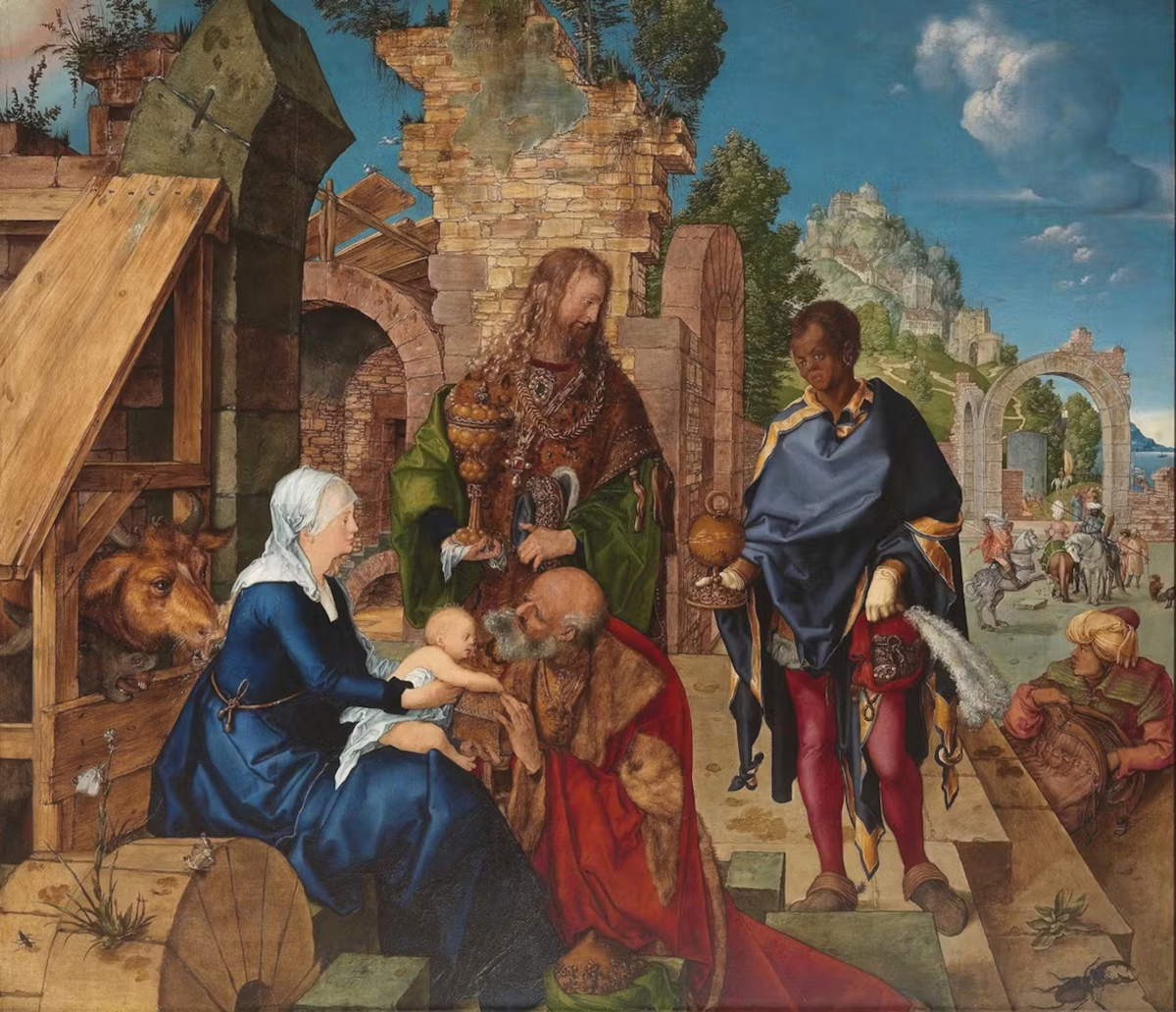From July 6 to October 13, 2024, the Castello del Buonconsiglio in Trento will host the exhibition Dürer and the Renaissance in the Alps, curated by Bernard Aikema, Laura Dal Prà, Giovanni Maria Sara, and Claudio Salsi, and promoted by the Castello del Buonconsiglio, in collaboration with the University of Trento and the Superintendence for Cultural Heritage.
For its first 100 years, the Buonconsiglio Castle museum, which was founded in 1924, thus chooses Albrecht Dürer: the great Nordic artist discovered Trento and Trentino between 1494 and 1495 and was fascinated by the landscapes and atmospheres of these places, whose essence he captured in a famous series of watercolors. His presence in Trentino is celebrated in the exhibition by drawings, watercolors, engravings and paintings. The German master’s art stimulated artists active here to rethink their art. Starting with the Dürer case, the exhibition therefore aims to investigate the origins of the original, sui generis Renaissance that developed in Trentino between 1470 and 1530-1540. In fact, a new style took shape, that is, a set of many new languages, influenced by artists, works, fashions and manners going back from Italy to Germany, Flanders and vice versa.
Trentino and South Tyrol boasted a number of episcopal (Brixen, Trent) and commercial (Bolzano) seats that were attractive hubs of the first order. A small autonomous enclave in the midst of the powers of the time, a laboratory of innovative artistic solutions was activated here in an era-the decades around 1500-of intense artistic and cultural transformation throughout Europe.
The exhibition will also investigate the presence of German artists in Trento, as exemplarily documented by Sisto Frey’s Crucifixion in the city’s cathedral.
A special focus will then be devoted to the figure of Prince-Bishop Bernardo Cles (1485-1539), promoter of the construction and decoration of the Magno Palazzo at Buonconsiglio Castle, adviser to Maximilian I and later a member of the imperial diet of Charles V, as well as his grand chancellor. He employed not only Italian artists, but had himself portrayed by painters such as Bartholomäus Bruyn, or medallists such as Hans Schwarz, and involved masters such as Bartlmä Dill Riemenschneider, alongside Romanino, Dosso and Fogolino.
Further study will also be devoted to the role ofEmperor Maximilian I, the ruler to whom Dürer served. Maximilian had himself proclaimed King of the Romans precisely on February 4, 1508, in Trent in a lavish ceremony, and Bishop Neydeck wanted the occasion commemorated in the organ doors of Santa Maria Maggiore painted by Falconetto.
Dürer and the Renaissance in the Alps will bring together nearly a hundred works on paper, paintings, sculptures and applied arts in various techniques. Artists, in addition to Albrecht Dürer, include Michael Pacher, Marx Reichlich, the Master of Uttenheim, Hans Klocker, Jörg Arzt, and the Olivieri. Through their works it will be possible to grasp the new religious sensibility, interest in the individual, reflection on the landscape, and the artistic permeability of an area “at the hinge” between the German and Italian worlds. L
The exhibition will conclude with a section devoted to works spread throughout the Trentino territory, clear evidence of the variety of styles that in that fruitful period manifested itself with happy results.
For info: https://www.buonconsiglio.it/
Image: Albrecht Dürer, Adoration of the Magi, detail (Florence, Uffizi)
 |
| At the Castello del Buonconsiglio, an exhibition will investigate the D?rer case and the origins of the Alpine Renaissance |
Warning: the translation into English of the original Italian article was created using automatic tools. We undertake to review all articles, but we do not guarantee the total absence of inaccuracies in the translation due to the program. You can find the original by clicking on the ITA button. If you find any mistake,please contact us.